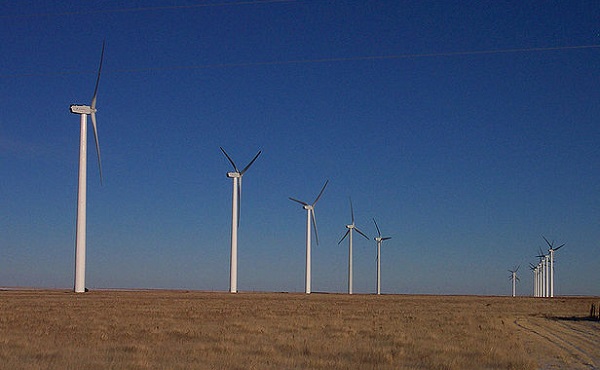A new attempt to get some firm idea of how damaging wind power plants are to bird populations in the United States suggests that the trend toward taller towers could be leading to more deaths. On the other hand, the new research also reveals that siting fewer new turbines in California and more in the Great Plains – where the wind resource is rich and increasingly being exploited – could decrease the risk to birds.
The new study, by scientists at the Smithsonian Institution Migratory Bird Center, the U.S. Fish and Wildlife Service and Oklahoma State University, comes amid a hot discussion of new U.S. permitting policies regarding the incidental deaths of bald and golden eagles at wind power plants.

This study didn’t focus at the species level, but instead analyzed available data to model bird mortality in an era in which lattice towers have largely given way to monopole towers with turbine hub heights often 80 meters or higher, and with longer turbine blades.
The researchers estimated that between 140,000 and 328,000 birds are killed annually by the monopole turbines, “which comprise the vast majority of all installed U.S. wind turbines,” the researchers reported. Their median of 234,000 is thus a good deal lower than a study earlier this year that put the figure at 573,000 (a figure that has been disputed). But in one of a barrage of caveats contained in the study – as is common for careful scientific research – the authors noted that byassuming that all turbines are monopole (there are a dwindling number of lattice towers), among other factors, might have affected their total.
More interesting, perhaps, is the tentative link the researchers draw between turbine height and avian risk. The reasearchers said their data set had hub heights ranging from 36 to 80 meters, and as height increased, “annual model-predicted mortality increased nearly ten-fold (from 0.64 t 6.20 birds per turbine).” The researchers went on to write:
Because we found a strong correlation between turbine hub height and rotor diameter, it is important to note that increased bird mortality may be a result of both increased turbine height and increased rotor diameter. As turbines get taller, greater mortality may occur due to turbines extending further into altitudes that contain large numbers of flying birds. As rotor diameter increases, a greater area of airspace is swept by the turbine blade and therefore exposed to collision risk.
And they added:
The projected trend for a continued increase in turbine size coupled with our finding of greater bird collision mortality at taller turbines suggests that precaution must be taken to reduce adverse impacts to wildlife populations when making decisions about the type of wind turbines to install.
Of course, the taller turbines also produce more energy; if fewer turbines are required, that could mitigate the trend impact. Another possible mitigating factor: Siting future wind turbine development less in California and more in the Great Plains. The study found – again, with caveats – that California had a mean collision rate of 18.76 birds per megawatt, whereas in the Great Plains the rate was 1.81 birds per MW. From the study:
Because average per turbine collision rates in the Great Plains may be relatively low, wind energy development in this region could potentially result in comparatively lower collision risk for wildlife. Previous research illustrates that the development potential for wind energy in the Great Plains is sufficient to meet the output capacity of the DOE’s 20% goal, even if development occurs only on lands that are already disturbed.
The researchers noted that wind turbines are far from the only threat human activities pose to birds, and allowed that wind power is a “promising alternative to fossil fuels.” But they concluded with this statement:
Despite an apparent lower magnitude of bird mortality at wind turbines compared to other anthropogenic mortality sources (e.g., windows/buildings, Klem, 2009; Loss et al., 2014; communication towers, Longcore et al., 2012, 2013; feral and pet cats, Loss et al., 2013), mortality at wind facilities should not be dismissed offhand. Instead, we stress the importance of considering species-specific and location-specific risks and the potential for cumulative impacts of multiple wind facilities and multiple mortality threats.